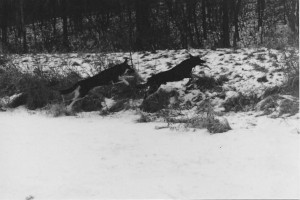In The Wild Life of our Bodies, Rob Dunn illustrates some of the negative ways in which agriculture has affected the modern human’s body. He draws on genealogical evidence that “proves” humans could not digest milk properly before the domestication of cattle, asserting that our new reliance on milk could be a contributor to the rise in obesity. I wonder, was Dunn referring to all milk? He did mention that milk served as “baby food,” but he then excludes humans from this category. Maybe I just misunderstood the reading, but to me the notion that human offspring did not used to rely on breast milk seems preposterous. Dunn perhaps was only referring to milk from livestock, but he did not mention human breast milk whatsoever in this passage, which left me a little confused.
Furthermore, I feel the scientists’ arguments he brings up (though he does not entirely back their findings) seem to put a little too much weight on agriculture as the key culprit, when I personally see mono-culture as the main issue behind obesity, starvation, and an unfortunate monopoly of the food industry. If we had a better variety, instead of almost all of our foods coming from corn, we would create a more stable and sustainable system, as well as returning to a diet better suited for our body’s needs. That being said, I believe the rise of agriculture is inevitable. In the almost Utopian society Dunn describes as that of the hunter-gatherers (where one would find food and then do art all day), the system eventually failed. This failure was inevitable, with human nature being so rooted in the Tragedy of the Commons theory; we will take more than our fair share from the land, and then we run out. Without social hierarchies and a controlled system (like agriculture), of course we ran out of food and the African villages had to move from one area to the other. Unfortunately, business has turned agriculture from a means of survival to a means of maximum profit, but we would have all suffered had agriculture not taken off.
As a bit of a gym rat, and one who has to watch my diet carefully due to hypoglycemia, I wanted to conduct a little research on whether eating as a hunter-gatherer (mainly a variety of fruits and nuts) like Dunn described would serve the same health benefits in the modern human body today, as it supposedly would have the historical humans described in this passage. Here is a summary of my findings:
While we should always strive to steer clear of as many processed foods as possible, diets such as the paleo or caveman diet, that recommends we eat as the hunter-gatherers did, it has not proven beneficial to our health to cut out eggs, dairy, and grains. Furthermore, dietitians view a diet this restrictive as “unrealistic” and “lacks balance.” Furthermore, the article points out that there are several discrepancies within scientific research of what cavemen would have actually eaten on a day to day basis. Overall, the choice to eat leaner, high-protein meat, and trying to avoid processed foods definitely presents benefits, but the paleo diet is too extreme and research does not necessarily support it.
http://healthland.time.com/2014/01/07/the-paleo-diet-craze-whats-right-and-wrong-about-eating-like-a-caveman/



